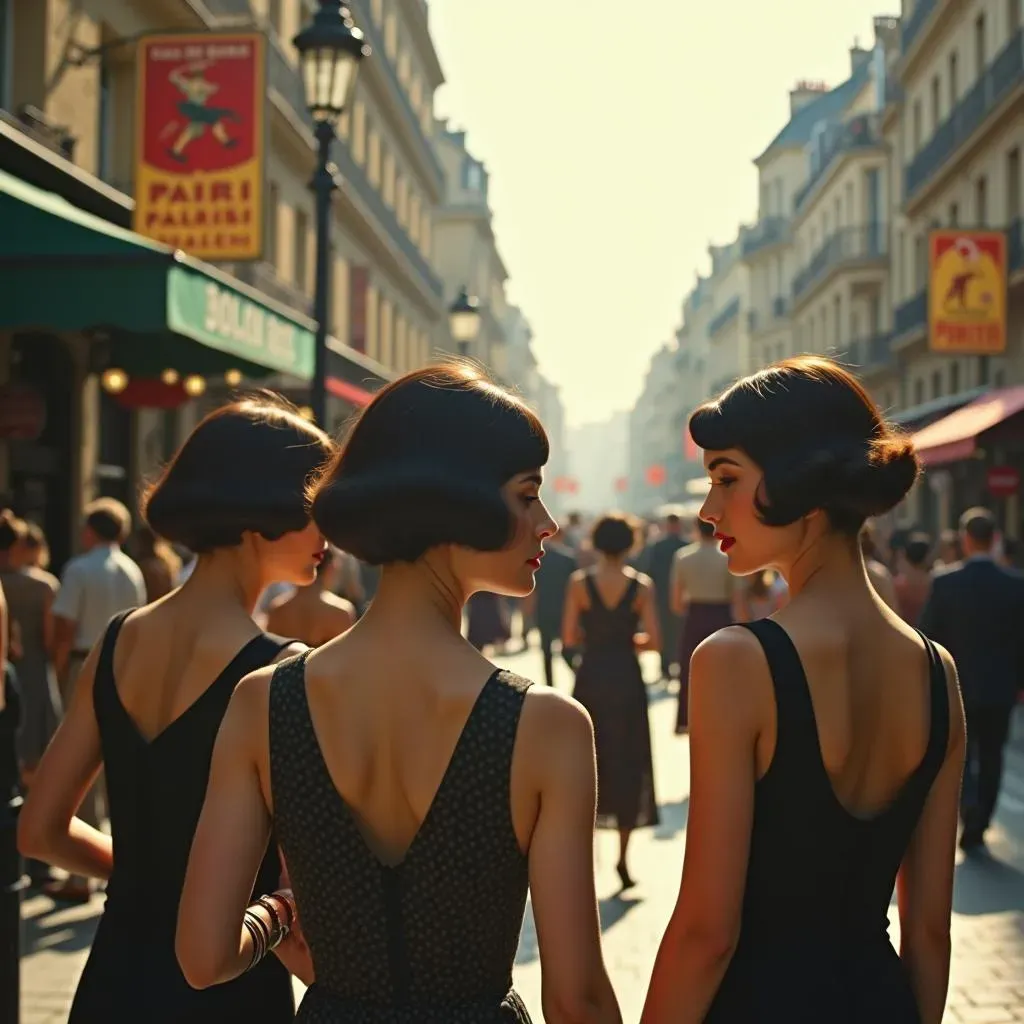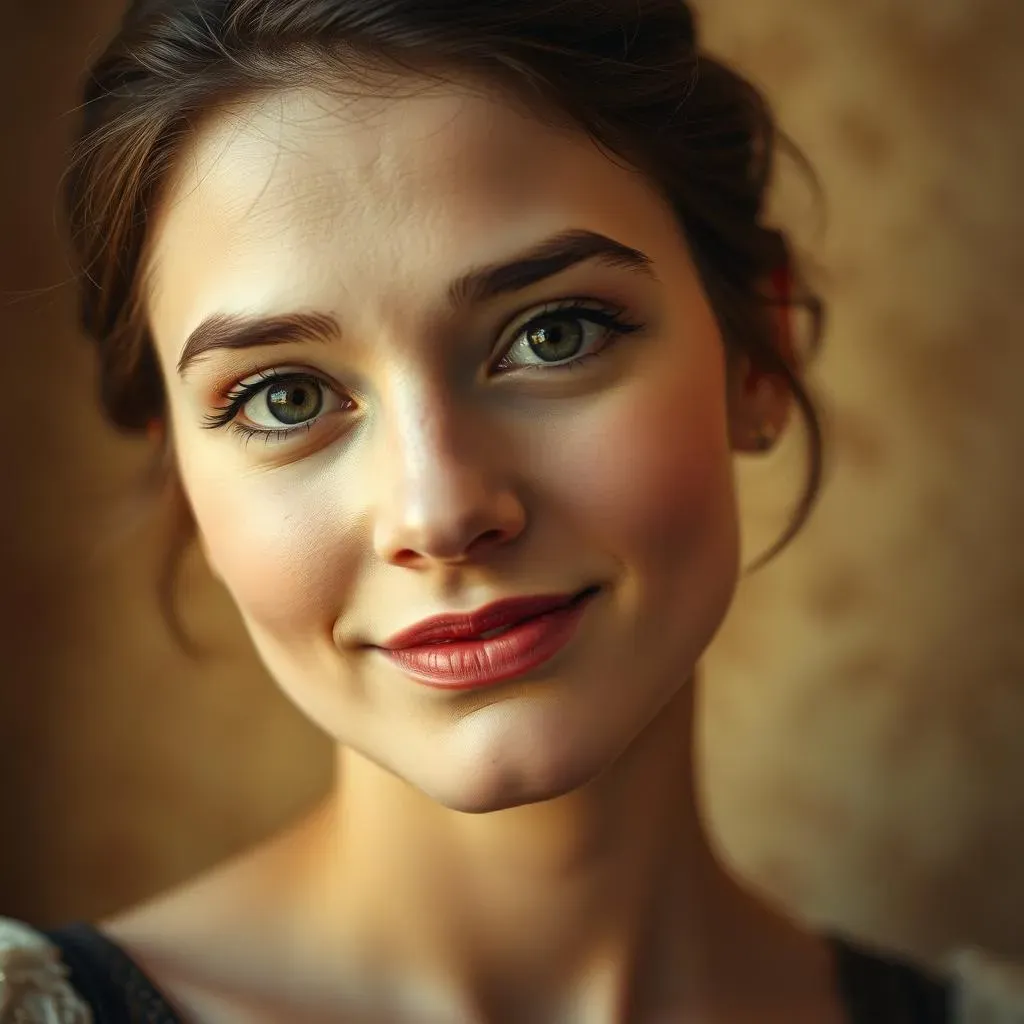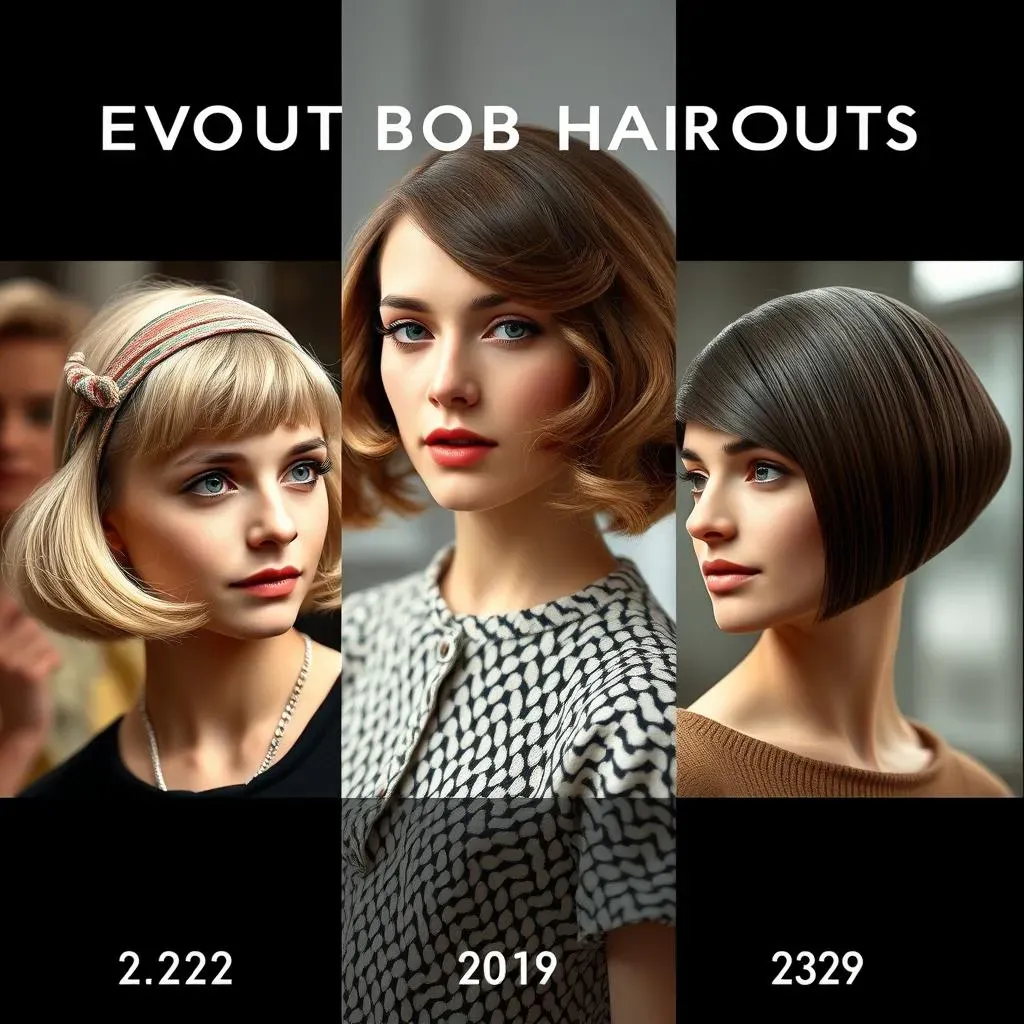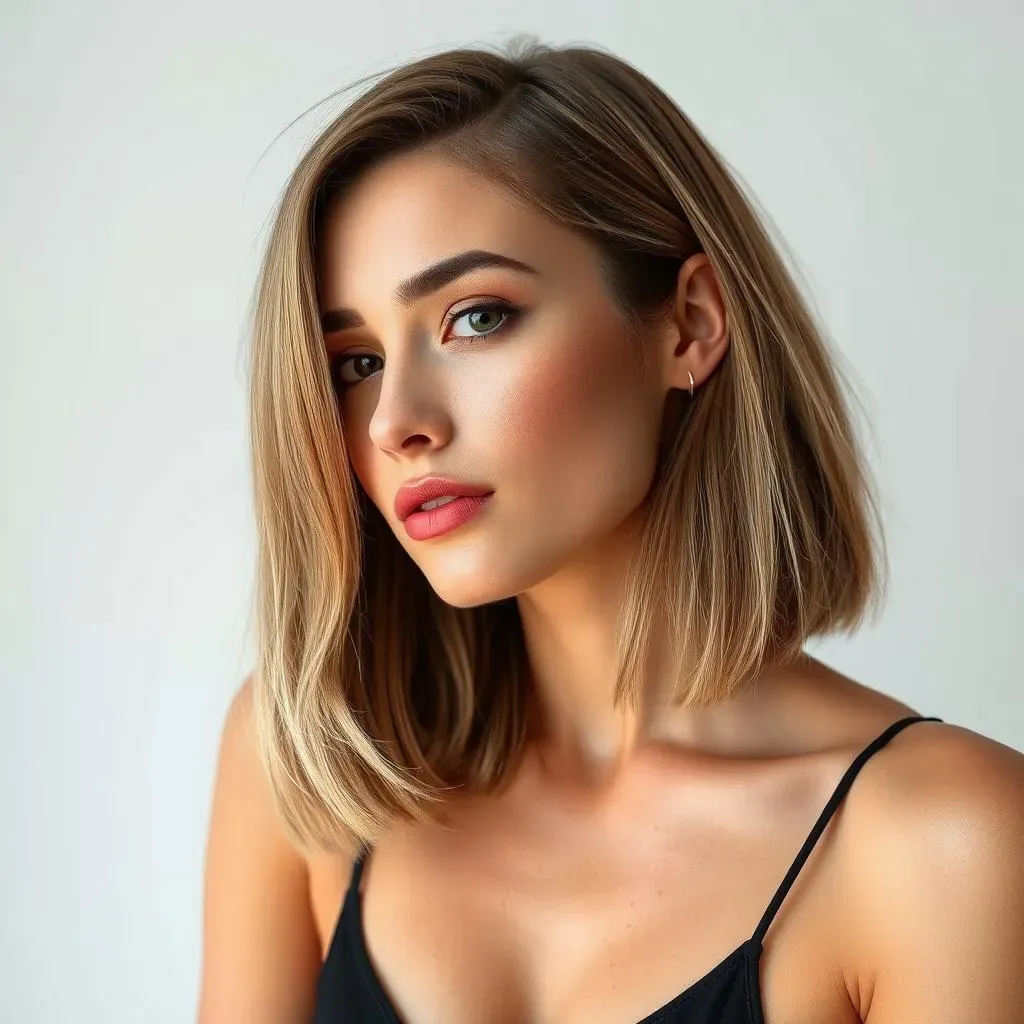Table of Contents
Ever looked at a chic, jaw-length haircut and wondered, "Why is it called a bob haircut?" It's a fair question, considering the name doesn't exactly scream "hairstyle," does it? Well, get ready to have your hair-related questions answered! This isn't just about a trendy cut; it's a journey through time, exploring how a simple style became a symbol of rebellion, modernity, and timeless cool. We'll start by looking at the early days of the bob, how it emerged in a world where long hair was the norm. Then, we'll unravel the mystery behind its name, and trace its evolution through different eras, from the roaring twenties to its modern-day revival. We will also explore the different types of bob haircuts, and will cover how it has kept reinventing itself to stay relevant. So, get comfortable, and let's dive into the fascinating story of the bob haircut.
The Bob Haircut's Early Days

The Bob Haircut's Early Days
The Long Hair Norm
Before the bob, long hair was basically the only option for women in the West. Think of those old portraits – hair cascading down their backs, often styled in elaborate updos. It was a symbol of femininity and respectability. Cutting it short? Unheard of for most. It was like having a uniform, and everyone was expected to follow it. This was the norm, and if you didn't have long hair, you probably had it tucked away under a hat or something.
However, even back then, a few women dared to be different. Some young girls, actresses, and those who considered themselves fashionable started sporting shorter styles before World War I. These weren't the bobs we know today, but they were a start, a tiny crack in the long-hair wall. These early adopters were like the rebels of their time, going against the grain and setting the stage for the bob to come.
A Glimmer of Change
The real shift started brewing in the early 20th century. World War I created a need for practicality, and suddenly, long hair seemed impractical, especially for women working in factories and other jobs previously held only by men. It was a moment where function started trumping tradition. Imagine trying to operate machinery with long hair getting in the way; it was a recipe for disaster, and women needed something that worked for them.
Also, there was a growing sense of independence among women. They wanted to break free from the old norms and express themselves in new ways. The bob haircut became a symbol of this newfound freedom. It wasn't just a haircut; it was a statement. It was like saying, "I'm not going to be defined by my hair anymore; I'm going to do what I want."
Here is a timeline of the bob's early days
Period | Hairstyle | Cultural Context |
|---|---|---|
Pre-1900s | Long Hair | Standard for women, symbol of femininity. |
Early 1900s | Short Styles | Early adopters, actresses, and fashionable women. |
World War I Era | Practicality | Need for functionality, women in new jobs. |
Why is it Called a Bob Haircut?

Why is it Called a Bob Haircut?
The Bob's Short Tale
so where does the name "bob" come from? It's not like someone looked at the haircut and thought, "Yep, that's a Bob!" The truth is a bit more quirky. The term "bob" was actually used to describe something short, like a horse's tail that had been cut off. In the Victorian and Edwardian eras, working horses often had their tails "bobbed" for practicality. It was a simple, functional cut, and that's what the women's haircut resembled when it first appeared. So, when women started chopping off their long locks, the name "bob" just kind of stuck. It was a way to describe the short, blunt style that was so different from the norm.
It's kind of funny when you think about it. Going from horses to hairstyles, who knew? But that's how language evolves, right? A word that describes one thing gets borrowed and applied to something else. The "bob" haircut wasn't just a random name; it was a nod to practicality, a hint of rebellion, and a touch of humor. It was like saying, "We're not just going to follow the rules; we're going to do things our way, even if it means borrowing a term from the stable."
From Horses to Hairdos
Interestingly, there's a bit of a reverse connection with the "bobby pin." The bobby pin was actually named after the bob haircut, not the other way around. It became popular in the 1920s, when women needed something to keep their short hair in place. So, the haircut came first, then the bobby pin, which just goes to show how influential the bob was in the roaring twenties. It's like a little fashion circle, where one thing inspires another.
The bob wasn't just a haircut; it was a cultural moment. It marked a shift in how women saw themselves and how society saw them. It was a statement of independence, a break from tradition, and a nod to a more modern way of life. The name "bob" might sound simple, but it carries a lot of history and meaning behind it. It's a reminder that sometimes, the most unexpected things can become iconic.
Here is a summary of the bob's naming
Term | Meaning |
|---|---|
Bob (for horses) | Short, cut-off tail of a horse. |
Bob (for haircut) | Short, blunt women's hairstyle. |
Bobby Pin | Hairpin named after the bob haircut. |
The Bob Haircut's Evolution

The Bob Haircut's Evolution
so the bob didn't just appear overnight; it went through a whole bunch of changes, like a caterpillar turning into a butterfly, but with scissors instead of a chrysalis. In the 1920s, the bob was all about that sleek, straight, almost severe look. Think of those flapper girls with their close-cropped hair and headbands – that's the classic bob. It was a bold move, a way for women to show they were breaking away from the past and embracing a more modern, independent style. But the bob wasn't just a single look; it was constantly being tweaked and reinvented.
Then, as the decades rolled on, the bob kept evolving. In the 1930s, it got a little softer, with waves and curls becoming more popular. The sharp, angular lines of the 20s gave way to a more feminine, rounded shape. It was like the bob was trying on different personalities, seeing what fit best. Then came the 1960s, and boom – the bob was back in a big way, thanks to the legendary hairstylist Vidal Sassoon. He created a geometric, architectural bob that was all about clean lines and precision. It was a total game-changer, and the bob became the "it" hairstyle of the decade.
Decade | Bob Style | Key Features |
|---|---|---|
1920s | Classic Flapper Bob | Sleek, straight, close-cropped, often with a headband. |
1930s | Softer Bob | Waves and curls, more feminine and rounded. |
1960s | Geometric Bob | Clean lines, precision, architectural structure. |
It's pretty cool how a single haircut can have so many different looks, right? The bob has proven itself to be a chameleon, adapting to different trends and tastes. It's not just a haircut; it's a canvas for creativity. The different variations are like chapters in a book, each one telling a different story about the times it was popular. From the rebellious flapper to the mod icon, the bob has really seen it all. It’s a testament to the idea that some styles are just too good to fade away completely.
And it’s not just about the shape; it's also about the details. Bangs, layers, different lengths – the bob can be whatever you want it to be. It's a hairstyle that keeps on giving, always finding new ways to reinvent itself. That’s why it’s still so popular today. The bob isn't just a relic of the past; it's a living, breathing style that continues to evolve and inspire, which brings us to the modern takes on the bob. It's like a fashion phoenix, always rising from the ashes and coming back stronger and more stylish than ever.
Modern Takes on the Bob Haircut

Modern Takes on the Bob Haircut
so, fast forward to today, and the bob is still rocking it, but with a modern twist. It's like the bob went to college, got a degree in style, and came back with a whole new perspective. We're not just talking about one type of bob anymore; it's like a whole family of bobs, each with its own personality. There's the classic chin-length bob, still chic and timeless, but now you've got the long bob, or "lob," which is like the bob's cool older sister. It hits just above the shoulders, and it’s perfect for anyone who wants a bit more length but still wants that bob vibe. Then, there's the asymmetrical bob, which is shorter in the back and longer in the front, adding a touch of edginess. It’s like the bob went on a little adventure and came back with a rebellious streak. And let's not forget the textured bob, with layers and choppy ends, perfect for that effortlessly cool, "I woke up like this" look. It's like the bob decided to let loose and have some fun, and I'm here for it!
The beauty of the modern bob is how versatile it is. You can style it sleek and straight for a polished look, or you can add some waves and texture for a more relaxed vibe. It’s all about how you wear it. And it's not just for one type of hair either; whether you have thick, thin, curly, or straight hair, there's a bob out there for you. It's like the bob is saying, "I'm for everyone, no matter your hair type or style.” This is a total contrast to the old days where the bob was seen as a very specific look. The modern bob is really about personalization and owning your individual style. It’s like taking a classic and making it your own, which is pretty awesome. It’s also easy to maintain, which is a big plus for busy people. The bob has come a long way from its rebellious roots to become a total style staple, and it’s showing no signs of slowing down.
Modern Bob Style | Key Features |
|---|---|
Chin-Length Bob | Classic, timeless, hits at the jawline. |
Long Bob (Lob) | Hits just above the shoulders, versatile. |
Asymmetrical Bob | Shorter in the back, longer in the front, edgy. |
Textured Bob | Layers, choppy ends, effortless look. |
Celebrities have also played a big role in keeping the bob relevant. From actresses to singers, everyone seems to be rocking a bob in some form or another. It’s like the bob is the go-to hairstyle for anyone who wants to look stylish and sophisticated. The great thing about the bob is that it’s always evolving. It’s not just a trend; it’s a classic that keeps getting better with time. It’s like a fine wine; it just gets more refined and complex as the years go by. I mean, who would have thought that a haircut that started as a symbol of rebellion would become such a timeless and versatile style? It’s a testament to the fact that good style never goes out of fashion, it just evolves and reinvents itself. And the bob? Well, it’s the undisputed queen of reinvention.
So, next time you see someone rocking a bob, remember that it’s not just a haircut, it’s a piece of history. It's a symbol of independence, a nod to the past, and a celebration of modern style. From its practical beginnings to its iconic status, the bob has definitely earned its place in the hair hall of fame. It’s a reminder that sometimes the simplest ideas are the most enduring, and that a good haircut can be more than just a way to tame your hair; it can be a way to express yourself. And that’s the real magic of the bob.
"The best thing is to look natural, but it takes makeup to look natural." - Calvin Klein
The Enduring Legacy of the Bob
So, from its rebellious beginnings to its status as a timeless classic, the bob haircut has proven it's more than just a passing trend. Its name, with its quirky origins, is just one piece of the puzzle. The bob's journey, from a symbol of freedom to a versatile style embraced by everyone, shows how much a simple cut can mean. It's a reminder that sometimes, the most iconic styles are born from unexpected places and that a good haircut can be a statement, a revolution, or just a really great look. The bob continues to evolve, with new variations and interpretations popping up all the time, ensuring its place in the world of fashion and hair for years to come.